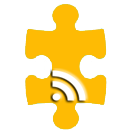Research now suggests that children as young as 6 months old can show signs of autism. The most important thing you can do as a parent or caregiver is to learn the early signs of autism and understand the typical developmental milestones your child should be reaching at different ages.
Once again, because our approach is practical, we provide descriptions of the characteristics, rather than merely listing them. By describing what a particular characteristic will look like when displayed, you will have a clearer picture of which symptoms are most problematic for your child. The characteristic trait list is presented in a checklist format below. We encourage you to copy this checklist and share it with all those involved with your child. It will be useful in determining initial diagnosis. Later, it will help those working with your child to better understand how particular attributes are translated into behaviors. The result will be a clearer understanding of the reasons behind the behaviors displayed by your child. It is important to remember that the more you understand about Autism behaviors and the reasons behind them, the more effective you will be when you begin to intervene and change behaviors.
If you have any concerns about your child’s development, don’t wait. Speak to your doctor about screening your child for autism. The severity, frequency, and grouping of the following symptoms will determine where (if at all) an individual will fall on the autism spectrum. We have compiled this CHARACTERISTIC TRAIT LIST as another SHORT CUT derived from experts, CDC and parents who have experienced signs.
Autism Symptoms
• Repetitive behaviors (may want to watch the same program over and over again)
• Unresponsive to commands or questions (“in their own world”)
• Delayed speech & language development (non-verbal, especially by age 3)
• Lack of imitation of others or imaginative play
• Indifferent to the feelings of others
• Hypersensitivity to light & sound (covers ears when music is played or covers eyes when going outside)
• Self-stimulatory behaviors (e.g., rocking, jumping up and down, hand flapping, toe walking, head banging)
• Echolalia (Repetition or echoing of a word or phrase just spoken by another person)
• Unusual emotional responses (inappropriate laughing or crying)
• Frequent temper tantrums / meltdowns (overstimulation)
• Responds adversely to physical affection, hugs, kisses, etc.
• Shows no interest in making friends
• Does not initiate conversation
• Very poor diet (may eat only starches; finicky or picky eater)
• Poor digestion, gas or bloating (“Budda” belly or distended belly)
• Frequently walks on tip-toes as a toddler
• Socially withdrawn or socially awkward
• Shows little expressive language (can’t articulate a cohesive thought after age 4)
• Clumsiness (falls or trips often; can’t handle scissors)
• Improper use of pronouns, statements, and questions
• Unusual tone or rhythm of speech
• Self Injurious Behavior (head banging, scratching/biting self)
• Frequently makes irrelevant remarks
• Difficulty with abstract language and concepts
• Be preoccupied with one or only a few narrow interests (example: only watches the movie “Cars” or same movie over and over)
• Need for sameness (adheres to routines)
• Severe tantrums when routines are disrupted
• Shows an attachment to unusual objects such as car parts, branches, leaves, etc.
• Fascination with spinning objects or spinning one’s self
• Very good at rote memory tasks such as repeating lists of items or facts
• Unusually technically or computer saavy (for older children)




